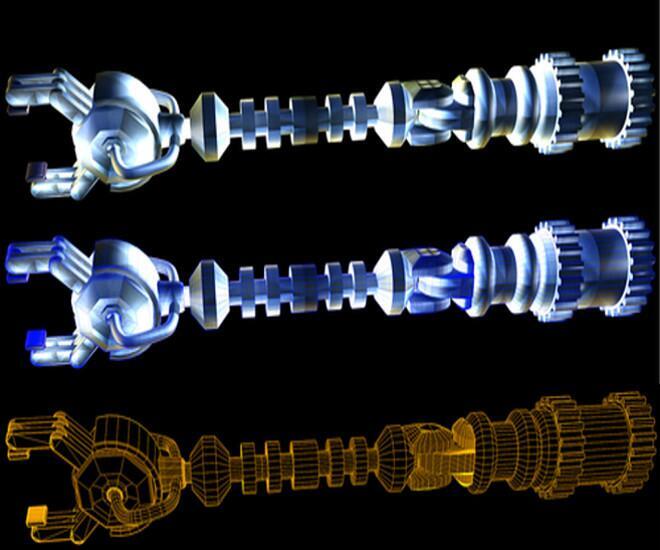Why robotics may soon require new links in the chain
Article By : Laurie Sullivan

Long term, autonomous robots could become highly disruptive to supply chains, particularly for electronics components supply chains.
As robotics forges new paths and fledgling markets for the electronic component supply chains, the shift could force procurement specialists to rethink strategies and expand relationships with suppliers. A report from Innography identifies patterns that analyse how autonomous robots such as cars and drones will disrupt multiple industries and create new product categories for electronic supply chains.
While the report focuses on intellectual property trends behind autonomous robot technology, it also briefly and indirectly suggests procurement specialists may want to rethink partner and supplier relationships. Long term, autonomous robots could become highly disruptive to supply chains, particularly for electronics components supply chains, Chris Huffines, a co-author of the report, told EBN. Innography provides patent search and intellectual property analytics software.
International Data Corporation (IDC) estimates the robotics market will reach $135 billion by 2019, up from $71 billion in 2015, with two-thirds of purchases coming from Asia. It also notes that worldwide robotics spending is dominated by the discrete and process manufacturing industries.
![[Innography robot (cr)]](/wp-content/uploads/sites/2/2020/04/Innography_robot_cr.jpg)
__Figure 1:__ *Autonomous robots such as cars and drones will disrupt multiple industries and create new product categories for electronic supply chains. (Source: Innography)*
As this new industry takes hold, companies must "adapt to embrace new opportunities or face threats from innovative competitors" and "find new ways to maintain and grow market share through internal development as well as new partner and supplier relationships," Huffines said.
Alphabet, Google's parent company, sits among the top six that have filed patents related to robotics. Automotive manufacturers such as General Motors Company, Toyota Motor Corp., Porsche Automobile Holding SE; Ford Motor Company; along with Robert Bosch GmbH hold the most patents related to robotics, according to Innography.
![[Innography robot patent (cr)]](/wp-content/uploads/sites/2/2020/04/Innography_robot_patent_cr.jpg)
__Figure 2:__ *Alphabet, Google’s parent company, sits among the top six that have filed patents related to robotics. (Source: Innography)*
CB Insights estimates the money will continue to flow for these types of project. In the first three months in 2016, nearly 15 companies working on robotics raised an aggregate of $89 million in funding across 15 deals. The technology focuses on manufacturing automation, agricultural automation, surgical applications, and personal and social robots. Together, the companies have raised more than $1.4 billion in aggregate since 2011.
The shift has the potential to create shortages or a glut of electronic components, depending on how industries react to advancements. While the extent that robotics will change supply chains remains unknown, Huffines said disruption often occurs when a rapidly-expanding market drastically increases the volume of components used, which decreases costs on electronics components simply through the economies of scale and competition in the market.
"This should also lead to increased innovation as more uses are found for existing technology," Huffines said, pointing to an article about how Google wants to get sensor packages for autonomous vehicles below $10,000 per car. "We saw the same thing happen with chip costs during the PC revolution. It appears that the larger players in this space are anticipating this decrease in price."
Despite Huffines' optimism, common sense also suggests if component manufacturers don't produce enough material for all industries, a shortage could force prices upward.
Manufacturing robots already exist. Companies optimise them for specific conditions in electronics manufacturing, including clean rooms, environments too toxic or dangerous for humans and when there's 24-hour fulfilment, distribution or manufacturing shifts without breaks.
Through cameras and machine learning techniques, robots can "see" defects better and faster than humans. They never get tired or bored with repetitive work. "Once manufactured, the components would be stored and packaged by autonomous warehouse robots, then shipped and delivered by autonomous trucks and perhaps drones, offering greater efficiency and lower cost than human operators," Huffines said.
Few of the patents in the research, however, focus on the electronic components. Most describe methods and systems to process sensor data for algorithms and software, or systems that form a robot for lawn care, according to the report. Hyundai, for example, filed a patent for a device that provides proximity information back to parking lot control systems, a type of signal that requires a component that could become very useful in the electronics supply.
Subscribe to Newsletter
Test Qr code text s ss


